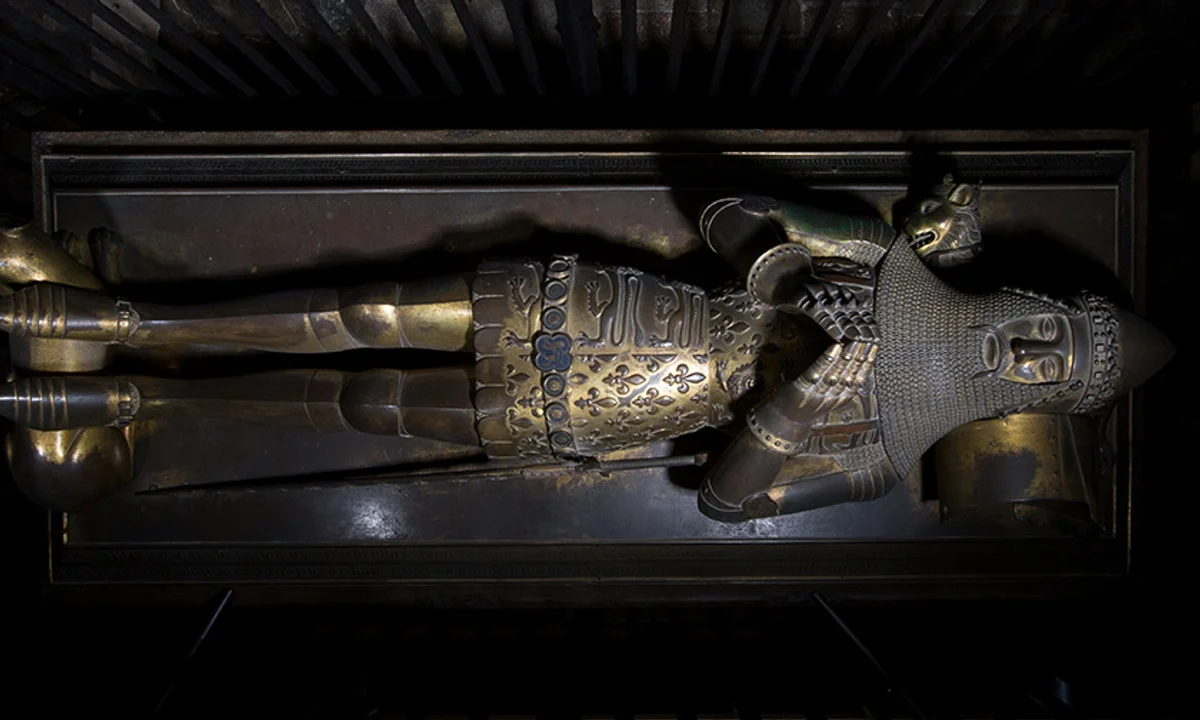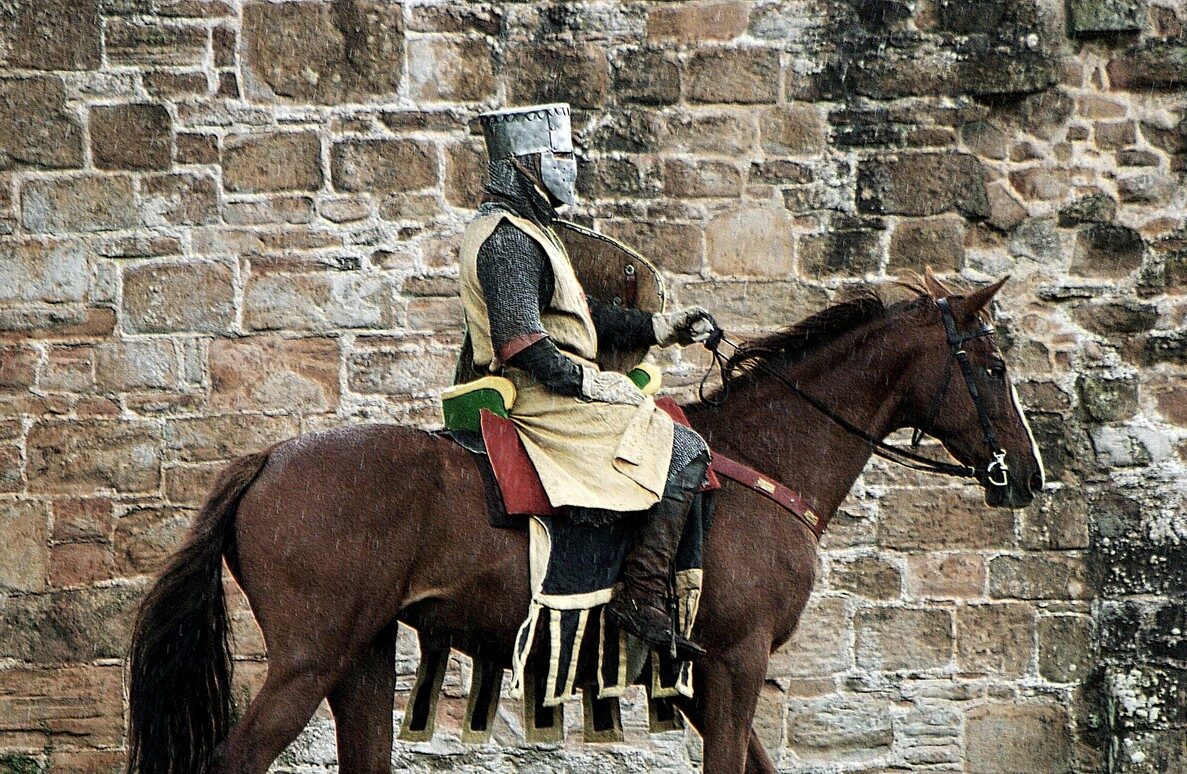Edward, the Black Prince, is a towering figure in the history of medieval England.
Born on June 15, 1330, he was the eldest son of King Edward III and Philippa of Hainault. His life and legacy are entwined with the Hundred Years’ War, a long and tumultuous conflict between the Kingdom of England and the Kingdom of France.
Here we will look at his life, achievements, and enduring influence shedding light on his military prowess, chivalry, and the complexities of his historical reputation.
Edward
Edward’s early life was marked by privilege and the weight of royal expectations. He was born at Woodstock Palace in Oxfordshire, England, and was given the title of Duke of Cornwall at birth.

As the heir to the English throne, he received a comprehensive education, which was typical of the aristocracy during the 14th century. His education encompassed subjects like literature, theology, music, and the art of war.
The Origin of the “Black Prince”
Edward earned the nickname “the Black Prince,” which has puzzled historians for centuries. Theories about the origin of this epithet abound, but none have been definitively proven.
Read More: Tender Healing: Exploring Medieval Bandages
Some speculate that it may be linked to the black armour he wore, while others suggest it was a reference to his severe, unrelenting nature on the battlefield. The exact reason remains a historical enigma.
The Hundred Years’ War
Edward distinguished himself as a military leader during the early stages of the Hundred Years’ War. He played a pivotal role in the Battle of Crécy in 1346, a resounding English victory over the French.
His exceptional leadership and valour on the battlefield earned him considerable acclaim. His success continued at the Battle of Poitiers in 1356, where he captured the French King John II.
The ransom for the captured king was an immense sum, solidifying Edward’s reputation as a military strategist and earning the English crown significant wealth.
The Battle of Crécy
The Battle of Crécy, fought on August 26, 1346, was a defining moment in the military career of Edward, the Black Prince, and a pivotal event in the early stages of the Hundred Years’ War.
Edward’s remarkable leadership and tactical acumen on the battlefield played a crucial role in securing a resounding English victory. The Battle of Crécy stands as a testament to his exceptional military prowess and enduring legacy.
Read More: The Game of Kings: Anyone for (Medieval) Tennis?
The English Army
Edward commanded the vanguard of the English army at Crécy, positioning himself at the forefront of the battle. The English forces were a mix of archers, infantry, and mounted knights, with a significant contingent of longbowmen. The longbowmen were armed with powerful longbows, a weapon that would prove decisive in the battle.
The French Army
The French army, led by King Philip VI of France, vastly outnumbered the English forces. Estimates suggest that the French army numbered between 20,000 and 30,000 men, while the English had approximately 7,000 to 10,000 troops.
The numerical advantage favoured the French, but it was the tactical advantage that would prove critical.
Choice of Battlefield
Edward’s choice of battlefield was strategic and played a pivotal role in the English victory. He positioned his forces on a high ridge with the town of Crécy to their rear. The English flanks were protected by thickets and hedges, making it difficult for the French cavalry to manoeuvre effectively.
The Role of Longbowmen
The Battle of Crécy is renowned for the devastating impact of the English longbowmen. Edward understood the potential of the longbow and its ability to rain down arrows on the enemy from a distance. The longbowmen were positioned at the front of the English formation, behind sharpened stakes planted in the ground to deter cavalry charges.
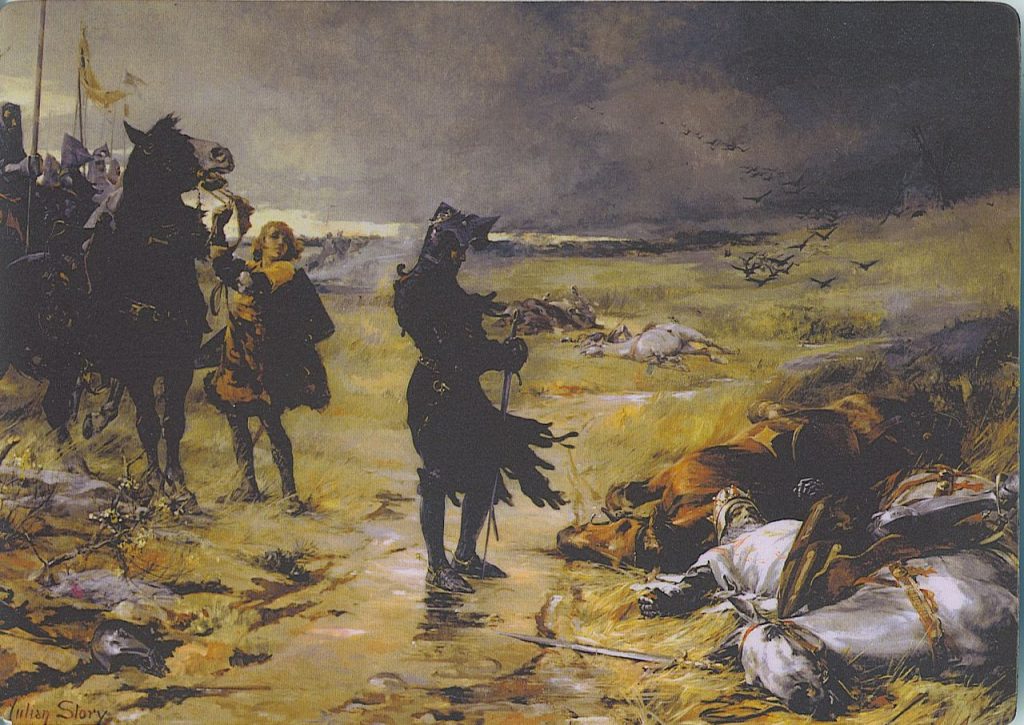
The French Assault
The Battle of Crécy began with a French assault on the English position. The French knights and men-at-arms, mounted on horseback, charged at the English lines. However, the effectiveness of the English longbowmen, combined with the advantageous defensive position, hindered the French advance.
Read More: Medieval Bricks and Roofing Materials: Solid as a Rock?
Edward’s Tactical Brilliance
Edward the Black Prince demonstrated remarkable tactical acumen during the battle. He recognized that the French cavalry charges were ineffective against the English defences.
He ordered his archers to focus on the mounted French knights, who were vulnerable to the longbows. The devastating hail of arrows decimated the French cavalry, creating chaos among their ranks.
The Impact of Nightfall
As the battle raged on, nightfall created further confusion among the French forces. The setting sun played tricks with the French perception of the battlefield, leading to additional disarray. French reinforcements arriving at night were unable to coordinate effectively with the beleaguered French troops.
The French Rout
The Battle of Crécy ultimately resulted in a rout of the French forces. King Philip VI of France, unable to rally his troops, ordered a retreat. The English emerged victorious, and the battlefield was strewn with French casualties.
The Black Prince at Poitiers
The Battle of Poitiers, fought on September 19, 1356, during the Hundred Years’ War, stands as one of the most remarkable and celebrated chapters in the military career of Edward, the Black Prince.
Read More: Dogs: A Medieval Wagging Tale
This historic battle not only showcased Edward’s exceptional leadership and tactical brilliance but also resulted in the capture of the French King John II.
Edward’s role at Poitiers solidified his reputation as a formidable military commander and earned him enduring acclaim.
Leadership and Planning
Edward’s leadership and strategic planning were instrumental in the success of the English forces at Poitiers. He led an army composed of English, Gascon, and Welsh troops, totalling around 6,000 men.
Despite being outnumbered by the French, Edward’s meticulous planning and understanding of the battlefield allowed him to choose an advantageous defensive position.
The Battlefield
The battlefield at Poitiers was carefully chosen by Edward. It provided a natural advantage for the English forces, with their flanks once more protected by thickets and hedges. The location was near the town of Poitiers in western France, and it featured a gently sloping terrain that would impede a frontal assault by the French.
The French Army
The French army, commanded by King John II of France, was significantly larger than the English force. Estimates suggest that the French army numbered between 20,000 and 30,000 men.
Read More: Medieval Bricks and Roofing Materials: Solid as a Rock?
This numerical superiority was expected to give the French a decisive advantage. The French hadn’t learnt their lesson from Crecy!
The English Archers
One of the key strengths of the English army at Poitiers was its skilled archers. The longbowmen, armed with powerful longbows, had already proven their effectiveness at previous battles, most notably at the Battle of Crécy.
The French Attack
The Battle of Poitiers began with a French assault on the English position. The French knights and men-at-arms charged at the English lines, attempting to break through. However, they were met with a relentless storm of arrows from the English and Welsh archers, who had the high ground and ample protection.

The Black Prince’s Tactical Brilliance
Realising that the French cavalry charges were becoming compacted against the English defensive position, he ordered his men to dismount and form a strong defensive formation. This decision negated the French cavalry’s advantage and allowed the English to withstand the assaults.
Read More: A Brief History of the Knights Templar
The Capture of King John II
As the battle raged on, King John II of France found himself in a precarious situation. He was separated from his main force and was eventually captured by a contingent of English and Gascon troops. The capture of the French king was a momentous event in the course of the battle and significantly impacted its outcome.
The French Rout
The capture of King John II had a demoralizing effect on the French army. With their leader in English captivity, the French forces began to disintegrate. Many French soldiers and knights surrendered or fled the battlefield, and the English emerged victorious.
The Aftermath
The Battle of Poitiers resulted in a resounding English victory. King John II was taken as a prisoner to England, where he remained in captivity for several years. The ransom for the French king was an immense sum, further enriching the English crown and bolstering Edward’s reputation as a military strategist.
Legacy of the Black Prince at Poitiers
The Battle of Poitiers cemented Edward the Black Prince’s reputation as a brilliant military leader. His ability to outmanoeuvre and defeat a numerically superior French force was a testament to his strategic prowess.
Read More: The Art of Medieval Beekeeping
Edward the Black Prince’s role at the Battle of Poitiers remains a legendary chapter in medieval military history. His strategic brilliance, leadership, and the capture of the French king all contributed to the resounding English victory.
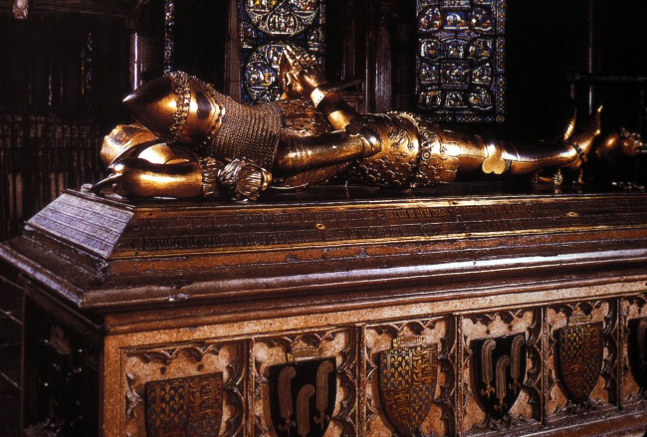
The legacy of the Black Prince at Poitiers endures as a testament to his exceptional military acumen and his enduring impact on the course of the Hundred Years’ War
The Black Prince as a Ruler
In addition to his military exploits, Edward the Black Prince played a role in the governance of territories he controlled. He served as Prince of Aquitaine, a region in southwestern France that was under English control. During his rule, he implemented administrative reforms, fostering a degree of stability and prosperity in the region.
The Tomb in Canterbury Cathedral
Edward the Black Prince’s legacy is commemorated in the magnificent tomb located in Canterbury Cathedral. The tomb, constructed in the 14th century, is a masterpiece of medieval funerary art.
Read More: Medieval Road Networks Were Any Built?
It features an effigy of the Black Prince in full armour, lying in a position of rest. The effigy captures the prince’s martial spirit, and the details of the armour are exquisitely rendered. Surrounding the tomb are intricately carved images of the prince’s achievements and the battles he participated in.
The “Chantry Chapel”
The tomb in Canterbury Cathedral is part of what is known as a “chantry chapel.” Chantry chapels were commonly established in medieval churches to pray for the souls of the deceased. The chapel in Canterbury Cathedral was founded by Edward himself, and it became a place of religious significance and remembrance for the Black Prince.
Enduring Legacy and Controversy
Edward the Black Prince’s legacy has been a subject of historical debate and interpretation. He is remembered as a chivalric and valorous figure, renowned for his military achievements. However, his historical reputation is not without controversy.
Read More: The Semi Derelict Medieval Town of Buje
Controversy Over Chivalry and Conduct
Edward’s contributions to the Hundred Years’ War were substantial. His victories at Crécy and Poitiers strengthened the English position in the conflict. However, the war continued long after his death and ultimately concluded with the Treaty of Paris in 1453, marking the end of English territorial claims in France.
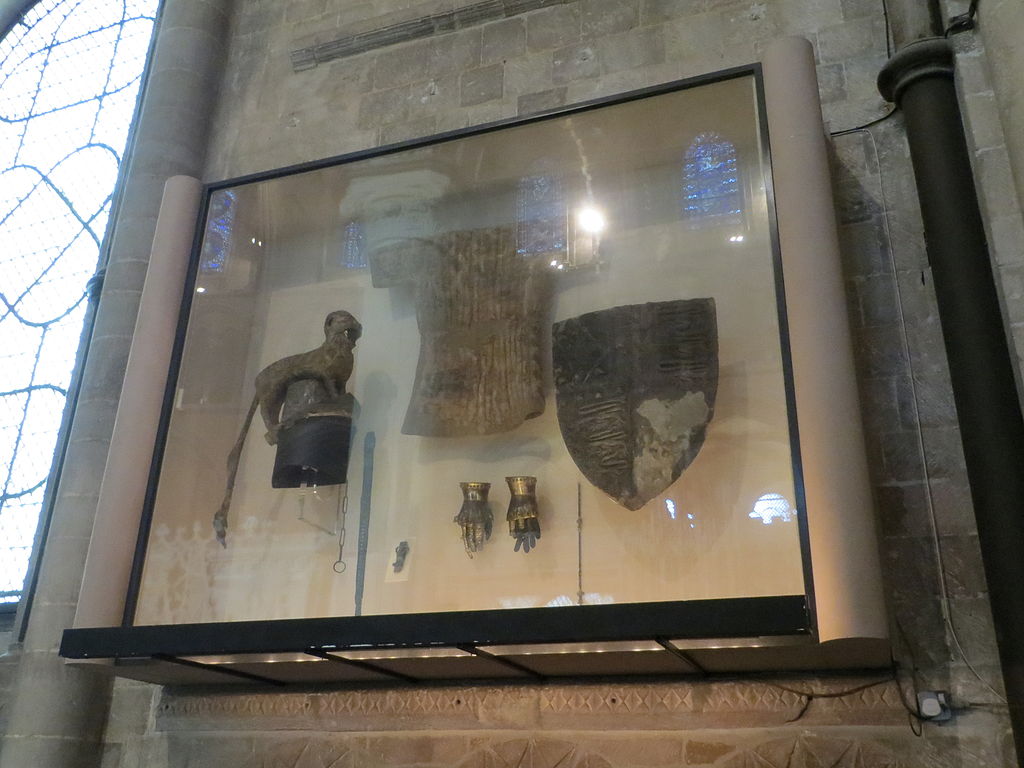
While Edward’s adherence to chivalric ideals was celebrated during his lifetime, some modern historians have revaluated his actions. The sack of Limoges in 1370, ordered by Edward, is often cited as a black mark on his chivalric record.
The sack resulted in the death of numerous civilians and has raised questions about the extent of his adherence to chivalric principles.
Cultural and Literary Influence
Edward the Black Prince’s life and exploits have left a lasting imprint on literature and culture. He has been a recurring figure in medieval romances, chronicles, and historical fiction. The legend of the Black Prince endures as a symbol of chivalry and medieval heroism.
Edward the Black Prince, a remarkable figure of the 14th century, embodied the ideals of chivalry and left an indelible mark on the history of medieval England.
His military achievements, chivalric conduct, and complex legacy continue to captivate the imagination and inspire further exploration of the medieval world.
As a symbol of courage and honour, the Black Prince’s historical significance remains undiminished, ensuring that his name endures in the annals of medieval history.
